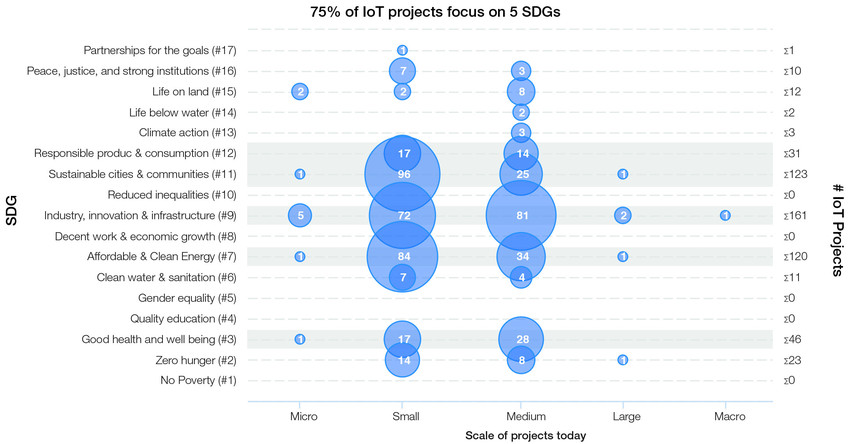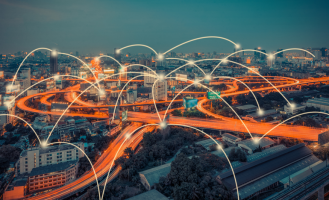“Human activities have radically altered earth’s surface, oceans and atmosphere, especially over the past 200 years.“ (Turner, 1990)
Human impact on the environment, is causing severe effects, that cause damage to the on the global scale.The power to resolve the problem is in our reach.
What is the Internet of Things?
The Internet of Things, are billions of different physical devices around the world that are now connected to the internet. All are collecting and sharing data. Any physical object can be transformed into an IoT device if it can be connected to the internet to be controlled or communicate information. Similarly, apart from being a tool to increase commercial profit, it is also a facilitator of sustainable and environmental projects. The internet of things is undoubtedly one of the largest enablers for responsible digital transformation. It is estimated that industrial IoT alone can add $14 trillion of economic value to the total of global economy by 2030.The economic value increases even more once consumer and public sector IoT are included.
Additionally, IoT It can improve efficiencies, protect resources and influence the daily lives. The IoT extends to a wide range of machines, including vehicles, household appliances, wearable devices, health care monitors, energy consumption meters, and security systems. The IoT also facilitates the collection of small data. Countries pending development are ideal for IoT innovation: the problems faced by the developing world can open up diverse and unexplored areas to which IoT can be applied. Aside from supporting economic growth, IoT also makes a significant contribution to development in social, environmental, as well as cultural aspects.
In today’s digitally driven world, it is also important to gain and retain public trust by ensuring privacy, integrity and respect for each individual’s data. In terms of how big it is, “ Tech analyst company IDC predicts that in total there will be 41.6 billion connected IoT devices by 2025, or “things.” (Ranger, n.d.)
To continue, IoTs, economic impact will be around $11.1 trillion, 14% of today’s global GDP, by 2025. The Internet of Things is no longer just a vocabulary term; it is rather a technology that is proving to generate positive socio-economic and environmental impacts.
Out of the 84% of the IoT programs addressing the SDGs according to World Economic Forum, 75% of them concentrate on the following five goals.
- SDG 9: Industry, innovation, and infrastructure (25%)
- SDG 11: Smart cities and communities (19%)
- SDG 7: Affordable and clean energy (19%)
- SDG 3: Good health and well-being (7%)
- SDG 12: Responsible production and consumption (5%)

SDGs are commonly interconnected and in order to gain results focused on one specific goal, it is necessary to have insights into other. Nevertheless, there are two main challenge areas for implementing IoT in the context of the SDGs. These are technical barriers, meaning, lot of the IoT software solutions on the market can only work with certain types of hardware, sensors, or machines. Secondly, commercial funding setbacks, meaning, a lot of projects are still in the small scale range.
Furthermore, it is important to see the connection of this blog post with the previous one. There is an important connection with the research on the future 6G communication network, it is important to notice how with the usage of 5G, the IoT is allowed to achieve a digital transformation, but with future 6G, this transformation will meet the full potential of cutting edge technological advances and its utilization.
SDGs serve as a guideline to find different solutions and business models, in order to generate change. Having that in mind, it is important to ensure that the impact of IoT exceeds sole financial metric and take into account value of sustainable development.The overall commitment towards SDGs will ultimately provide solutions driven by connectivity and help to overcome the challenges, the 2030 Agenda is facing. Technologies that help to achieve these goals will improve lives for future generations, while providing positive economic growth and environmental change.
References
Hoek, M., 2018. The Trillion Dollar Shift. Milton: Taylor and Francis.
Ranger, S., n.d. What Is The Iot? Everything You Need To Know About The Internet Of Things Right Now | Zdnet. [online] ZDNet. Available at: <https://www.zdnet.com/article/what-is-the-internet-of-things-everything-you-need-to-know-about-the-iot-right-now/>.
The Temboo Blog. n.d. The Path To 2030: Sustainable Development Goals (Sdgs) & Iot. [online] Available at: <https://blog.temboo.com/sdgs-and-iot/>.
Turner, B., 1990. The Earth As Transformed By Human Action: Global And Regional Changes In The Biosphere Over The Past 300 Years. Cambridge University Press.


